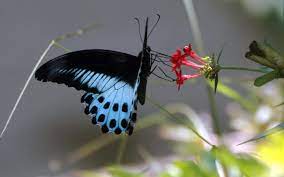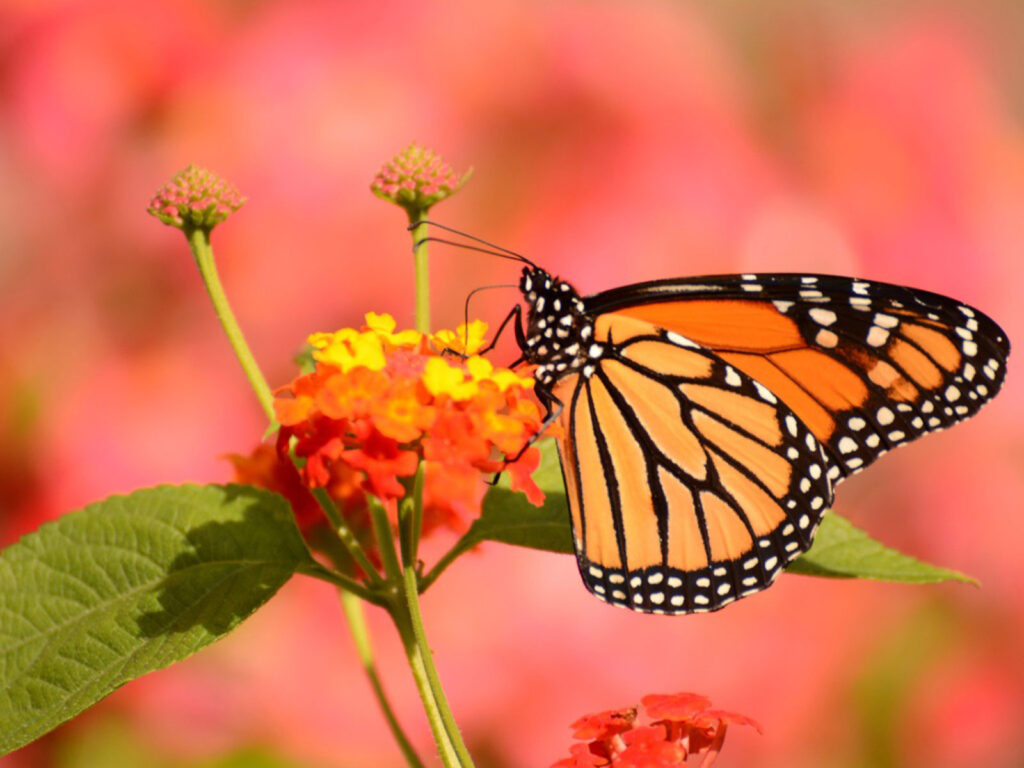National Insect of India
-by Abhrajita Mondal
–Reading Time – 6 min Approx
–Edited by – Srishti Bhattacharyya
The national insect of India is Butterfly. You will come across several species of butterflies in India. The butterflies from the family Papilionidae or Swallowtails are considered the national insect of India. The family Papilionidae consists of 550 species. In India, you will find around 89 species. The majority of the members are tropical and present everywhere except Antarctica. The family includes the largest butterflies. You will be able to identify the Swallowtails quite easily. The Swallowtails have a distinct organ inside their thorax. It remains hidden most of the time. However, the butterflies bear it on getting threatened. The Swallowtails have hind legs which have a forked appearance. It can be seen easily when the butterflies spread their wings. 
The life cycle of the butterflies from the family Papilionidae is important. Moreover, the morphological characteristics are worth mention. The butterflies pass through various stages. The egg is the first stage, then comes the larva, the pupa, the imago, and lastly the full-grown butterfly.
You should know the characteristics of Swallowtails to differentiate them from others. Some of the butterflies have a black and white color scheme. The colors seem to emulate bird droppings. It is a camouflage mechanism. Furthermore, you will be surprised to know that on being threatened, the older ones inflate an organ behind their heads. It is known as an osmeterium. It emits a pineapple-like smelling substance that deters birds. The odor repels ants and mantids.
The National Insect of India – Habitat and Food:
These butterflies usually prefer places that have sedges growing like fields, hedges, and forestlands. Fens and marshes are frequently inhabited as well. They are spread across the UK but you can find them on almost all continents. If you were in Britain, you would find them in Norfolk Boards. Moreover, it is one of the largest butterfly species in Britain today. The butterfly has a wingspan of 93mm. The national insect of India beats the Purple Emperor butterfly by 1mm. In India, the Swallowtails are spread across a variety of biomes. The Malabar Banded Swallowtails that fly above sea level are very popular too.

The Blue Mormons, another species of the same family, fly at ground level. The tailed jay is found high on tree canopies. Moreover, the Lime variety is often spotted in the Thar Desert. Endemic species are found in abundance in the Western Ghats. The species are Southern Birdwing, the Malabar Banded Peacock, and the Malabar Rose. The family of largest butterflies is magnificent to the core. They usually sport elongated tails.
They mostly prefer warm climatic conditions and places having abundant flowers. Swallowtails feed on plants from the Apiaceae family or the carrot family. Other than that, they also feed on parsley, celery, dill, and parsnip. Their favorite plants are thistles, phlox, and clover. The national insect of India, in the caterpillar stage, feeds on a variety of woody and herbaceous plants.
List of National Symbols of India:
If you are an Indian, you should know about the national symbols of India. It represents the national culture and philosophy. These symbols provide a sense of nationalism and pride. Moreover, these are widely used in all official documents and events. The National Symbols of India include the national flag, song, anthem, animals, birds, fruits, and insects. These symbols have been carefully selected, after weighing their importance in the history, culture, and social status of the country. The various symbols like animals, and birds, have been included in the list to raise awareness about the ecosystem and conservation.
Continue reading to find a list of the top National Symbols of India:
- Tiranga – It is a prominent representation of Independent India. The National Flag of India has three colors. The three colors are saffron, white in the middle with a chakra, and green. Each of these colors represents various aspects of the culture and history of India.
-
Ashok Chakra – It is the national emblem of India. It signifies that law is above all. The Ashok chakra, with the Lion Capitol on top of the Ashoka Pillar in Sarnath, was adopted as the national emblem of India. The National Emblem of India is present on all Indian currencies and on the official letterhead of the Government of India. It consists of four lions, out of which one is invisible. The three lions are visible all the time, from any given direction. The other elements include a galloping horse, a bull, and the Dharma Chakras.
- National Anthem of India –Jana Gana Mana is the national anthem of India. The Nobel laureate Rabindra Nath Tagore composed the poem. Subhas Chandra Bose had selected it as the National Anthem of India.
- National Song of India –The national song of India is ‘Vande Mataram’. It became a patriotic symbol during independence and commemorates the mother. Bankimchandra Chattopadhyay composed the song. It was first sung in the 1896 session of the Indian National Congress.

- National Bird of India – It is none other than the peacock. Everybody knows about the national bird. The males are prettier with long feathers on the tail. There are about 200 of them. The males often fan out their tails and dance during the rains.
- National Animal of India – It needs no introduction that the Tiger is the national animal of India. The yellow coat and the black stripes can never go unnoticed. It is the epitome of strength and agility. It is connected with power.
- National Flower – The Lotus is the national flower of India. It is used in the worship of gods in India. It is a sacred flower, which is spread across the region.
National Vegetable of India:
Are you wondering which is the national vegetable of India? Well, it is quite common and it is the Indian pumpkin. It is found throughout the country. It does not need great soil. You can even grow it on the rooftop. It is a climber or creeper. Furthermore, it is a vegetable for the poor because of its cheap price. Most Indians use it in vegetable curries and gravies. It is quite suitable for growing in a tropical climate. It is the characteristic feature of the Indian climate.
The Indian pumpkin has loads of nutrients. It is particularly rich in Vitamin A. Apart from vitamins, you will also find many minerals in pumpkin. Moreover, it is low in calories and has 94 percent water. Pumpkin seeds are also eaten. Furthermore, they contain many nutrients and several antioxidants, making them good for the skin.
You must also know about the national fruit of India, i.e. mango. Mangoes are also known as ‘King of Fruits’. They are a part of the spiritual heritage of the country and come in various flavors and colors. Moreover, it is one of the most cultivated fruits in India.
You will be overwhelmed to know that, there are at least 1,500 types of mangoes, the most popular of which are Bombai, Himsagar, Totafuli, Langda, Alphonso, Fazli, Neelum, and many more. Mangoes have several vitamins and minerals. Moreover, they have a low glycemic index. Therefore, diabetics can also consume them. Mango is often considered as the ‘Food of the Gods’ for its ethereal taste. Indians use mango leaves in the course of worshipping gods and goddesses. The five mango leaves joined together is a mandate for Indian rituals.
The Banyan tree is the national tree of India. It is considered to be an eternal tree and has an expansive array of branches. You will hear the name ‘kalpavriksha’ being associated with the tree, which means ‘wish fulfilling tree’. Moreover, the leathery leaves of the tree give shelter to plants, animals, and human beings. The older Banyan trees have aerial prop roots. With time, they become woody trunks. It is native to the Indian subcontinent. The Great Banyan is the largest tree in India. Additionally, the tree denotes longevity. It also grows rapidly. In five years, it can mature into a full-grown tree.
The national symbols are the cultural identity and symbolic of the Indian country. They infuse a sense of pride and glory. It is the means to communicate history and culture to foreigners. Therefore, it is extremely important to know about the symbols.
-by Abhrajita Mondal
Dear Reader, Hope you liked the post. If you think our initiative “The Creative Post” is worth supporting, then please support us by paying the amount you think we are worthy of. We believe, the value of content should be decided by the consumer. Hence we request you to evaluate our worth and pay accordingly by Clicking Here.



Hi Abhrjita, I am an educator. can you please share the reference of any government website stating that the butterfly is the national insect of India. I want it for documentation purpose. Thanks in Advance.